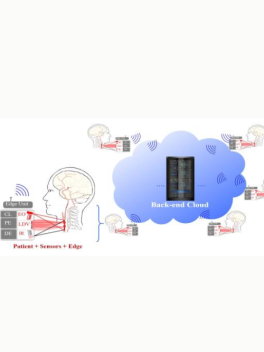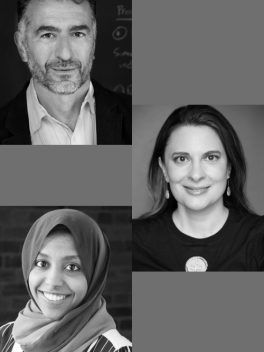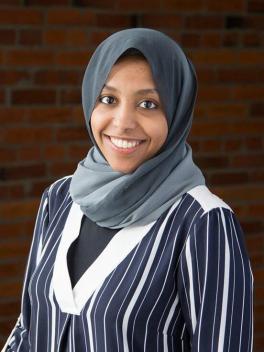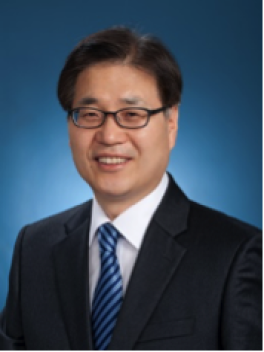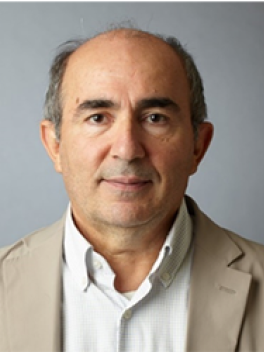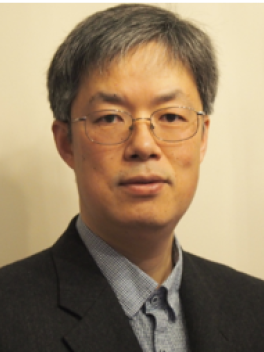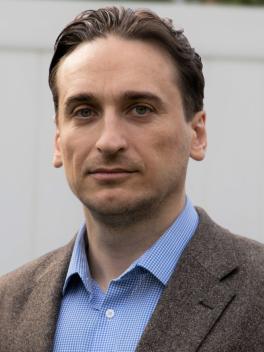$2.8M NSF grant funds CCNY AI heart disease diagnostics project – Sept 2023
A City College of New York-led project utilizing Artificial Intelligence and Machine Learning (AI/ML) technologies to develop a low-cost, easy-to-use, and high-precision system for the early diagnosis of cardiovascular disease is the recipient of a four-year $2.8 million National Science Foundation (NSF) grant. The Ohio State University-based, NSF-funded AI-EDGE Institute is partnering with The City College in the project entitled: “AI/ML-driven edge computing for cardiovascular disease diagnosis/mechanism study.”...
Proposed CCNY Quantum Institute earns $5M NSF funding - August, 2023
The City College of New York is establishing a state-of-the-art quantum institute, funded by a five-year $5 million grant from the National Science Foundation [NSF], to advance quantum research. Conceptualized by City College physicist Alexander Khanikaev – recipient of the NSF's prestigious Special Creativity Award in 2021, and one of the most Highly Cited Researchers (HCR) worldwide in 2022 – The City College of New York Quantum Institute comprises leading experts in quantum at CCNY and scientific partners from Nokia Bell labs and the University of Central Florida College of Optics and Photonics (CREOL/UCF). The latter’s Andrea Blanco-Redondo is co-principal investigator on the project...
Three Grove School faculty join $12M Google cybersecurity research project – July 2023
The City College of New York is a participant in a $12 million Google initiative to stimulate the cybersecurity ecosystem and establish New York City as the global leader in cybersecurity. CUNY, Columbia University, Cornell, and New York University are the other institutions involved in the Google Cyber NYC Institutional Research Program...
Grove School Engineer Samah Saeed is beneficiary of $4.6m DoE Grant to Advance Quantum Computing - April, 2023
City College of New York Computer engineer and scientist Samah M. Saeed is the co-recipient of a $4.6 million U.S. Department of Energy[DoE] grant to advance quantum computing. The funding is for her project, “Toward Efficient Quantum Algorithm Execution on Noisy Intermediate-Scale Quantum Hardware.”...
Grove School Team is #1 in US & Canada at International Hardware Security Competition - December, 2022
A three-member team from The City College of New York’s Grove School of Engineering emerged US-Canada region winners in New York University’s global CSAW ’22 AI vs. Humans Challenge at NYU’s Tandon School of Engineering. The Grove team comprised electrical engineering (EE) PhD candidate Vedika Saravanan, EE PhD student Mohammad Walid Charrwi; and computer engineering graduate student Facundo Aguirre. Samah M. Saeed, assistant professor, electrical engineering, was the faculty advisor...
CCNY is plugged into the fiber network of the COSMOS beyond-5G testbed - January, 2022
The City College of New York is now directly connected to the COSMOS beyond-5G testbed, which is supported by multi-million dollar investment from the National Science Foundation (NSF). The testbed was created to help U.S. researchers experiment with new methods that will shape and revolutionize the future of wireless networks in smart cities and communities...
Electrical Engineering Professor M. Umit Uyar receives U.S. Army funding for drone research - November, 2021
M. Ümit Uyar, Professor of Electrical Engineering, has recently received a $1.2 million in funding from the U.S. ARMY to further his research aimed at designing autonomous drone flight and task control by artificial intelligence and game theory based algorithms that would not require preplanned mission directives and allow for real-time response to unpredictable changes in theatre...
Electrical Engineering Professor Seo receives National Science Foundation grant for his research - September, 2021
Professor Sang-Woo Seo’s research is on theoretical analysis of photonic devices and systems; nano/micro fabrication and processing; three-dimensional photonic integration/packaging; optical MEMs for biological applications; integrated microsystems using RF, bioMEMs, and photonics; integrated microfluidics, and flexible photonics devices for sensors and display...
Electrical Engineering Professor Alexander Khanikaev recipient of a Special Creativity Award from the National Science Foundation - February, 2021
Professor Alexander Khanikaev is the recipient of a Special Creativity Award from the National Science Foundation Division of Materials Research. The award extends Dr. Khanikaev’s current grant “Novel Aspects of Topological Photonics in Open Optical Systems: Non-Hermiticity and Fano-Resonances” by two additional years ($300,000)...
Last Updated: 08/01/2025 22:45
